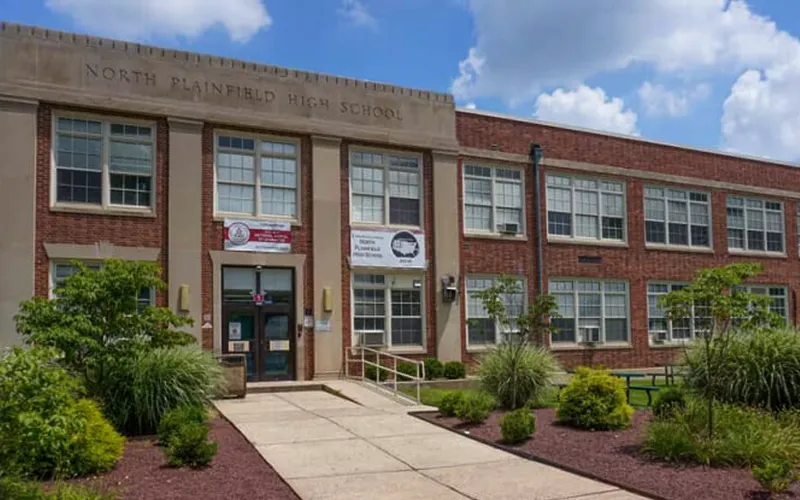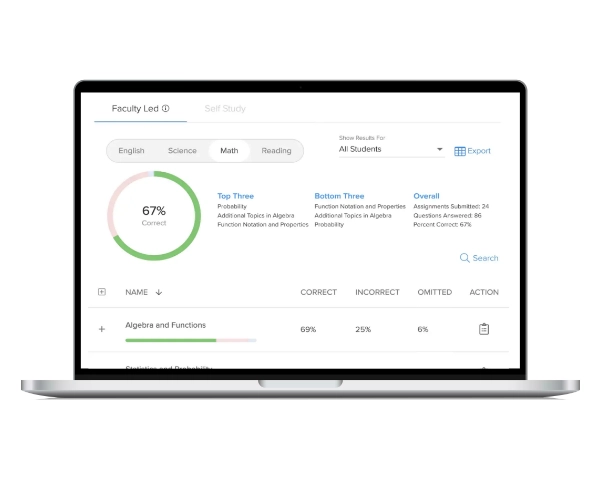AP classrooms focus on college-level thinking and application, so many schools are embracing project-based learning (PBL) to move beyond rote memorization. That's why James McCormick, an AP Environmental Science teacher in North Plainfield School District in New Jersey, switched to a fully project-based instructional approach with his APES students this year. In an interview with James, he shared insights into how PBL works in his AP classroom, the challenges he has encountered, and the impact he has observed on student learning.
About Project-Based Learning
PBL is an instructional approach that engages students in real-world problem-solving through sustained inquiry and hands-on projects.1 Unlike traditional instruction, where students passively absorb information, project-based teaching encourages active exploration of complex questions over weeks or months.
Key elements of PBL include tackling real-world problems, encouraging student-centered learning, and promoting sustained inquiry through research and critical analysis. This interdisciplinary approach integrates multiple subject areas, requiring students to draw connections between different fields of study. The learning experience culminates in the creation of public products, such as presentations, reports, or models, demonstrating students' ability to apply their knowledge in practical situations.
Research comparing PBL-based AP instruction to traditional methods found that students engaged in PBL scored higher on their AP exams.2 By making content more engaging and applicable to real-world contexts, PBL prepares students for the academic and professional challenges ahead.
Project-Based Teaching In the AP Classroom
The College Board® has taken significant steps to integrate project-based teaching into AP instruction, offering educators new ways to engage students in deeper learning.
One key initiative is the AP Project-Based Learning Series, a yearlong professional program that includes an AP Summer Institute and ongoing online support.3 Available for select courses such as AP Environmental Science, AP Human Geography, AP Statistics, AP U.S. Government and Politics, and AP World History: Modern, this program helps teachers implement inquiry-driven instruction that aligns with AP standards.

Additionally, the College Board has introduced optional project-based teaching approaches for AP Environmental Science, AP U.S. Government and Politics, and AP Computer Science Principles, allowing educators to adopt project-driven teaching models that foster critical thinking and application.4
PBL is also being incorporated directly into AP assessments. Some AP courses, such as AP African American Studies and AP Seminar, require students to develop research-based projects as part of their final AP score. Others, including AP Computer Science Principles and AP Art and Design, include performance-based tasks that emphasize creativity and problem-solving. To support educators in this shift, the College Board has partnered with PBLWorks to provide professional development for AP Environmental Science and AP U.S. Government and Politics teachers.5
About James McCormick: APES Instructor at North Plainfield High School
McCormick has long incorporated projects into his instruction. However, when his administrator, Alex Kuziola, introduced the idea of a fully project-based APES course, McCormick embraced the opportunity to make PBL the foundation of his teaching. Now, every aspect of his AP Environmental Science course is structured around hands-on, inquiry-driven projects that encourage students to think critically and apply their learning in real-world contexts.
What does PBL look like in your AP classroom?
I've always done projects as an integral part of my classes. Except for APES, they've not consistently been part of the whole school year, where everything is part of a project and everything is within that context. As they said during the College Board's summer training for project-based learning, I shouldn't — and don't — just do so-called “dessert projects,” where you do some sort of project at the end of a unit to reinforce it. I've always used projects as more of a teaching tool, allowing kids to come to conclusions through discovery. For me,it's more of a real experiential struggle with the material, that students are really doing something practical. They're learning. They're thinking about it as they go, and they're thinking about what they'd be doing in a real-world type context.
To start a project, we introduce it, and my students are given different end goals for each one. We have presentations. We have what's more-or-less a “town council” meeting, and we have a variety of papers. We have different things that are the end products for each project. Along the way, we have different tasks my students must complete to learn. Part of it is learning the material, and part of it is applying it to the project. Everything is pretty particular in that way. So they need to understand the concepts in more than just a vague manner. My students must be able to apply them.
How do you make sure projects align with APES CED requirements?
We don't follow the order of the AP Environmental Science units, as they're organized by the College Board. We do have 5 total projects, and those follow the content requirements of the APES curriculum pretty strictly. We have 5 units, and we spiral through the content throughout various units. So we don't just cover unit 1 content in 1 particular spot. We might touch on it in 1 unit, then get more details about that content in project 3. That aspect of PBL is something that doesn't align with a lot of online resources, learning platforms, or whatever it might be because you can't just cover the topics listed in unit 1 and say, “Here, take a unit 1 test.” We don't do that. We have projects.
I wrote my syllabus at the beginning of the year by going through the College Board's Big Ideas and made sure to include everything an administrator could possibly want. This way I can say, "Hey, this is project 3. This is what we're doing. This is project 4. This is what we're doing. Here's the rationale for it, according to the College Board."
I also go along and try to see how many days it will take for everything and then I'll slot my projects in. So it's more of a timing thing than anything else. I make sure that everything is on Google Classroom at least a couple days before the assignments go out. Although sometimes I'll just schedule them because I don't want students to see what's coming next.
Each week, I'll give my administrators my schedule for the upcoming classes and provide them with more detailed information about what I'm actually doing. I look at my plan and I reflect on it every day, asking, “What do we need to do? Are we continually moving in the same ways as I anticipated?” The lesson plans are dynamic.
What challenges have you encountered while using PBL with AP Instruction?
Consider the AP labs, which are written by the College Board and incorporated as activities into individual projects within the context of my PBL classroom. Scheduling these labs can be difficult.
Additionally, if you look at how the curriculum incorporates APES labs, there is a real struggle to the analysis part of them, too, because it is not what the students think of as analysis. What they think of analysis is not really analysis.
For example, the labs may tell them to “look at these numbers, and as you can clearly see,” and at that moment, my students are thinking that no, they can't clearly see a bunch of numbers. And they don't know much about statistics by then, either, and that's OK because we're kind of working on weaving some of that into what I teach them. But just looking at these lab graphs, and even without error bars and standard deviations, they can come to a conclusion if they approach it properly.
So far, I've found that when my students have shown me something, if I can't tell what it is by their demonstration of work, neither can they. So, they need to go back and show what the data from the lab really shows, not what they think it should show. It's not about fitting their hypothesis into what they think that it has to be because they want a good grade. They can have the opposite conclusion of what they predicted in their hypothesis, if that's what their data shows. This is a challenge they've been improving upon throughout the course, but it is something they do struggle with.
Have you noticed any benefits with your class since introducing PBL?
I like how my students take ownership of their own projects. The timeline of their work will have to be tweaked a bit, but I don't have a problem with my students learning through a project-based AP curriculum instead of me lecturing about the content. I like allowing them to work through their own discovery. The majority of my students' learning is what they discover and do on their own. I prefer that and always have.
PBL has allowed my students to have a bigger-picture approach to learning, too. I see better answers from them in that regard. I know people in advanced instruction try to call it “systems thinking,” or some similar AP course jargon, but it really is just being able to see a bigger picture approach to learning and being more practical about it. Anytime we ever do anything hands-on that has some basis of inquiry to it, my students get more excited and jump right in. That's one reason why I enjoy project-based learning.
What are your plans for PBL instruction as an AP teacher moving forward?
I might look at some things in the project-based curriculum for APES and change them a bit more, which we've even been told is fine. I like to keep mostly to what's there already, however, because it's my first year going through this course with a PBL lens. Moving forward, I'm just going to continue to see what these projects, which were not written by me, have to offer. I'll continue to use the College Board's curriculum as a guide. I'll change it as needed, since I don't follow the exact timeline of the units, especially next year. For the most part, collaboration with my students is pretty good. I think they learn well with project-based instruction. That kind of practical approach helps.
What advice would you give other AP teachers about PBL?
If another AP teacher were to come to me and ask for advice on how to implement PBL into their own AP classes, I would respond by asking them, “What are you willing to do?” I've been having to go through certain trainings throughout the course of the year, and during the original one over the summer, I heard a lot of educators asking, “How am I going to get through all of this content?” And I believe it's all built-in. If what you're doing is really project-based learning, you need to trust it and actually be able to deliver it the way it's supposed to be delivered. It's not supposed to revolve around the idea that, “I think my students are missing this, so they need to do all of this content at once, and I'm running out of so much time.” If that's how you think, you're always going to run out of time, and you probably haven't looked to see where that content really is being taught in more detail.
Yes, you can add some things in here and there, but if you're always doing that because you're afraid of teaching the curriculum rather than letting your students discover it on their own, you're not going to meet the time crunch at all and you're going to be anxious all the time. You need to relax, be flexible, and let the kids discover the content while guiding them. It really comes down to that.
References
- PBLWorks. (n.d.). What is project-based learning? Retrieved from https://www.pblworks.org/what-is-pbl
- PBLWorks. (2021, February 22). The College Board partners with PBLWorks to train teachers for new AP courses rooted in project-based learning. Retrieved from https://www.pblworks.org/news/college-board-partners-pblworks-train-teachers-new-ap-courses-rooted-project-based-learning
- College Board. (n.d.). Project-based learning in AP courses. Retrieved from https://apcentral.collegeboard.org/professional-learning/project-based-learning
- College Board. (n.d.). AP courses with projects. Retrieved from https://apcentral.collegeboard.org/about-ap/start-expand-ap-program/build/ap-courses-with-projects
- PBLWorks. (2021, February 22). The College Board partners with PBLWorks to train teachers for new AP courses rooted in project-based learning. Retrieved from https://www.pblworks.org/news/college-board-partners-pblworks-train-teachers-new-ap-courses-rooted-project-based-learning




